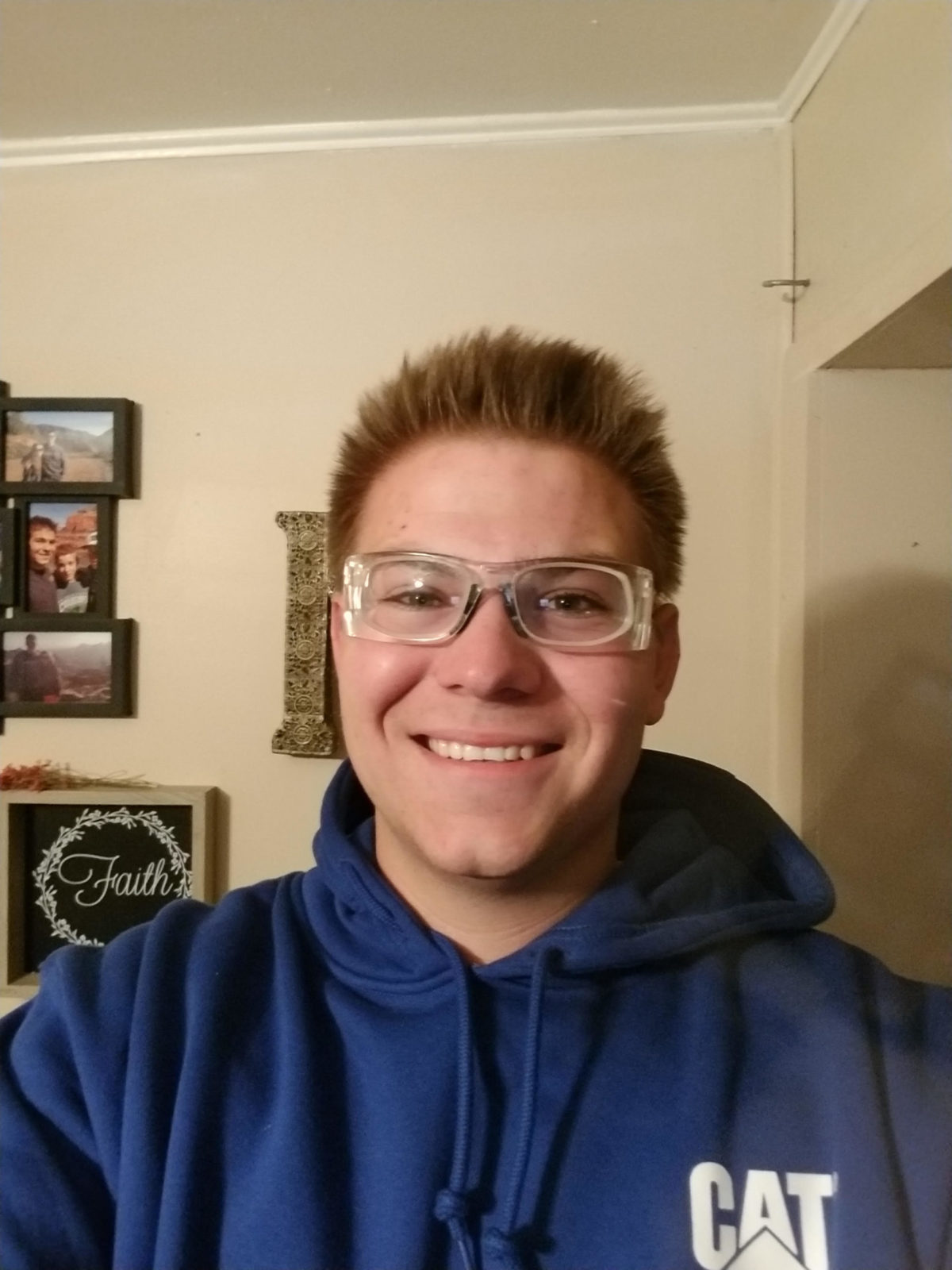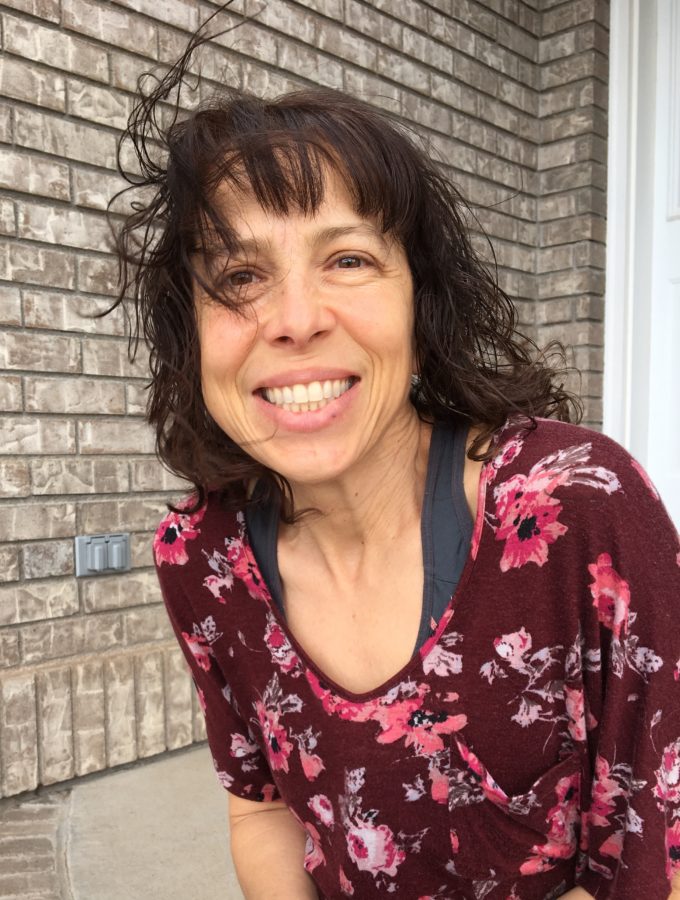Author: Lisa Hyde-Barrett

The World in Relationship to Asbestos – Devin Marsh
Early in my life I was unaware that natural materials could cause such devastation to the human body. I never knew that diseases such as mesothelioma could happen from people making normal life decisions. I always believed that people got sick from making poor choices, such as not wearing a coat on a rainy day. However, I was introduced to the effects of asbestos when I was in high school. The automotive teacher at the time became seriously ill, partially due to the exposure of asbestos in older brake systems. He was one of the sincerest teachers that I’ve ever met. He was somebody who never heard a dumb question, somebody who was happy to teach and looked forward to each day, and somebody who genuinely enjoyed educating others. In my opinion he rarely made poor choices and was an outstanding person, so I was confused as to why he became sick. It made me realize that there is a need for new materials that are less hazardous to the people around it. People deserve to go and work in a safe environment and be given every chance to prevent exposure to things like asbestos.
According to the World Health Organization, approximately 125 million people are exposed to asbestos in the workplace, and that in 2004, asbestos related lung cancer, mesothelioma and asbestosis from occupational exposures resulted in 107,000 deaths. These deaths could have been prevented by using an alternative source of materials when constructing buildings and other objects created using asbestos. With the education that I am receiving I hope to be part of the development process that creates alternative solutions to the use of asbestos in products and materials, particularly in third world countries. As a mechanical engineer I could apply positive and environmentally friendly problem solving to prevent exposure to asbestos. The United States Geological Survey states that from 1900 to 2003–when the last U.S. asbestos mine was shut down–the United States produced approximately 3.29 million metric tons of asbestos material. This reveals that there is still a large amount of asbestos material that still resides in people’s homes and offices. The future exposure to asbestos may not be entirely avoidable for individuals such as construction crews. Through the development of advanced prevention techniques and alternative solutions, the world will soon see the rapid decline of asbestos related diseases and deaths.
The more knowledge that is available about asbestos, and the dangers of it, increase the chances of public awareness. Even if one person were to know and wear the proper protection when dealing with asbestos, it would make the effort worth it. Asbestos is much more commonly found than just dust in old houses and automotive brake systems. It was an extremely popular material to use and was cheap to manufacture. It is still in many different products and materials that people handle every day. The Agency for Toxic Substance and Disease Registry states that the most at-risk industry for exposure to asbestos are construction workers. An estimated 1.3 million people participate on these worksites and risk exposure. With standards put out by OSHA these workers are relatively safe and well informed about the hazards and how to prevent exposure.
Foreign countries are where the focus of asbestos awareness should be. Asbestos.com highlights the facts that foreign countries use and produce asbestos with no restrictions. China is the world’s largest consumer of asbestos. In 2007 China used 626,000 metric tons of asbestos in daily production of an assortment of different materials. Russia, the world’s leading producer of asbestos, mined more than 1 million tons of asbestos in 2008, and shipped two-thirds of it to developing countries. Expeditions to educate both the government and the workforce in these countries should be initiated. This readily available material is regularly used with no restrictions or safety standards. The European Agency for Safety and Health at Work estimates that, “the annual death toll from Mesothelioma, lung cancer, and other asbestos related diseases in China may reach 15,000 by 2035”. The cost effectiveness of asbestos will mean that countries are unlikely to spring at the idea to an alternative material. However, I believe that more precautionary methods and personal protective equipment will bring exposure rates down by more than 45 percent in high risk environments.
To somebody fighting Mesothelioma or a family member who recently lost a loved one to the disease, I would say this: Do not feel like this is just a bad hand that you were dealt, it is not fair but it is also not in vain. Take confidence in the fact that your pain and suffering has been instrumental in raising change and awareness about the dangers of asbestos. Because of your hardship, future generations of the world are changing in a better way to avoid hazardous exposure.
Works Cited
- Virtra, Robert L. Worldwide Asbestos Supply and Consumption Trends from 1900 through 2003. USGS, 23 Nov. 2016, pubs.usgs.gov/circ/2006/1298/.
- “International Program on Chemical Safety.” World Health Organization, 2018, www.who.int/ipcs/assessment/public_health/asbestos/en/.
http://www.who.int/ipcs/assessment/public_health/asbestos/en/ - “Asbestos Toxicity Who Is at Risk of Exposure to Asbestos?” Environmental Health and Medicine Education, ATSDR, 9 Aug. 2016, www.atsdr.cdc.gov/csem/csem.asp?csem=29&po=7.
- Persaud, Nadia. “6 Countries to Watch for Asbestos Use and Abuse.” Asbestos.com, Mesothelioma Center, 7 Mar. 2017,
www.asbestos.com/blog/2011/12/06/6-countries-to-watch-for-asbestos-use-and-abuse/. - Morris, Jim, and Te-Ping Chen. “Top Asbestos User China Faces Epidemic of Cancer.”Dangers in the Dust, International Consortium of Investigative Journalists, 21 July 2010, www.icij.org/investigations/dangers-dust/top-asbestos-user-china-faces-epidemic-cancer/.

Kelley McGill Asbestos Scholarship Essay
Over the past year, my family has been challenged in so many ways due to a cancer diagnosis that was caused by asbestos. In November of last year, my grandfather was diagnosed with Stage 3 Small Cell Lung Cancer. This came as a complete surprised to our family due to the fact that my grandfather has always been very conscious about his health, makes healthy food choices, is compliant with all medications and very active in exercise. The weeks following diagnosis we learned that his cancer metastasized to his spine, C-2 and T-2, as well as his liver. His Oncologist broke the news that his cancer was terminal and that treatment would not cure the disease. As our family conducted research into what could have caused the cancer to form in his body, asbestos became a probable cause.
In his younger years my grandfather worked as an electrical engineer. Throughout his career, he worked at several industrial sites and power plants. Through extensive research, the discovery was made that many of the companies he was working for had asbestos cases open against them. These cases were for positive asbestos findings and even dated back to when my grandfather was an employee. The physicians confirmed that due to his work in these affected power plants and factories that asbestos was the main cause of his cancer. With his diagnosis in hand, I decided to educate myself more about asbestos so that I can be better informed about my grandfather’s cancer and able to provide clarity to questions from my friends and family.
Throughout this process I have learned a great deal about asbestos. There are two types of asbestos: Chrysotile and Amphibole. Chrysotile, or white asbestos, is commonly found in the industrial settings, which is likely the culprit for my grandfather’s cancer. Amphibole is mainly known for its straight need-like fibers with several different types: amosite (brown asbestos), crocidolite (blue asbestos), tremolite, actinolite, and anthophyllite. (cancer.org, 2015) Both forms of asbestos are commonly found in nature and in many products such as building material, roofing shingle, siding shingles, heat-resistant fabrics, etc. Asbestos exposure typically leads to one of three diagnoses; lung cancer, which can appear as early as 15 years past initial exposure, mesothelioma, which can appear as early as 30 years past initial exposure, or asbestosis, which is is a lung disease that can develop into lung cancer if not treated. (cancer.org, 2015). I was surprised to see that many symptoms or diagnoses did not appear until several years after the initial exposure.
According to mesotheliomahelp.org nearly 3,000 people are diagnosed with mesothelioma each year in the United states (Hill & Pacho, n.d.). That is a large amount of people each year that are still affected by asbestos. This number is alarming, especially due to the EPA (Environmental Protection Agency) having different acts in place in an attempt to reduce exposure. For example; in 1989 the EPA created a rule banning most products that contained asbestos; however, in 1990 the ruling was overturned and the ban list was shortened (epa.gov, 2016). With so many individuals and families still affected by asbestos related health problems, it is important to keep encouraging families and individuals.
Through out my grandfather’s cancer journey, I have been his daytime caregiver. I assist with medication, helping him to the wheelchair, helping him eat, and being his guardian throughout the day to ensure that he has everything that he needs. I decided that I can provide a greater good for patients like my grandfather and families if I furthered my education and became a nurse. There is so much advice that I could give to family members taking this journey. For example, I could tell them that it is okay to be angry, scared, and upset about your family members’ diagnosis, but do not dwell on it. Celebrate the small victories. If today your loved one finished off a milkshake after not having an appetite for a while, be happy! If they decided they wanted to sit on the porch and enjoy some fresh air, celebrate it. Do not take your good days for granted. I celebrate every good day that I have with my grandfather, the days that he is fussing at me for not getting enough sleep, or the days that he is spirited enough to give my stepdad, uncle, or mom a hard time. Cherish every smile, every laugh, every hug, every kiss, and every soft spoken “I love you too.” Do not take it for granted, then go and raise awareness about asbestos and let your love ones story be heard. It is only through awareness that more regulations can be placed on asbestos products in a chance that they will one day all be banned. More regulations can assure that we can further reduce the chance of another family facing their loved one going through cancer treatments or difficult diagnosis due to asbestos.
References:
- Asbestos and Cancer Risk. (2015, September 15). Retrieved March 14, 2018, from https://www.cancer.org/cancer/cancer-causes/asbestos.html
- Asbestos Laws and Regulations. (2016, September 01). Retrieved March 16, 2018, from https://www.epa.gov/asbestos/asbestos-laws-and-regulations
- Learn About Asbestos. (2017, November 06). Retrieved March 16, 2018, from https://www.epa.gov/asbestos/learn-about-asbestos

My Father, A Hero
He never raised his voice in anger. He was always soft-spoken and kind. He was 6’4” and 190 pounds. Today, people ask me why I walk so fast and I tell them it is because my father was very tall. I had to take many little steps to keep up with his one large step and I never wanted to be left behind. He worked hard for his family and for his country. He served in WWII and was a captain in the Merchant Marines, spending most of his time on the boats that would supply our soldiers and allies with the needed resources to fight and win the war. He also volunteered with the Flying Tigers as a navigator. When he returned home to America, he had shrapnel embedded in his body along with another deadly chemical. Little did he know that he and his fellow soldiers had been exposed to the material that would slowly take their health and eventually their lives.
Asbestos…naturally occurring, resistant to heat, fire and electricity. It sounds wonderful, but in fact, it is a mineral that, due to its fibrous nature, can be inhaled and then lodge in the lining of the lungs. It causes inflammation which, over time, can result in normal cells becoming cancerous. This is what happened to my dad. After the war, he studied to obtain his Unlimited Master Captain’s License as a boat captain. Due to his knowledge and his experience, my dad was asked to go overseas to Egypt after the Suez Crisis in 1956. He became the first US boat captain to pilot the canal after that incident. He also met a charming young lady who was born and raised in Cairo. She was the youngest of 7 daughters born to a Jewish family living in Egypt. After the Suez Crisis, her father was picked up by the Cairo police and questioned regarding accusations that he was a Jewish spy. He was not a spy, but it became evident that, due to the volatile relationship between Egypt and Israel, his family was no longer safe in Egypt. My father helped the family relocate to Canada. Afterwards, he returned to America via Niagara Falls where he and my mother, the charming Jewish Egyptian woman, married.
Fast forward to 1982…I had just turned 17. My father had been sick for over a year. He wouldn’t tell us what was wrong because he wanted to protect us. But, we saw his 190 lb frame wither down to 103 lbs. Finally, my parents told my sisters and I the truth. My dad was dying from Pleural Mesothelioma with metastasis to the Peritoneum. My father never smoked. In fact, he was passionate about health and nutrition. So, cancer was the furthest thought from his mind and from ours. A doctor once told me that Mesothelioma is the most painful cancer there is. My strong father who never ever raised his voice began to cry out in pain, especially during the hour before his next dose of pain medication was due. We kept him home and we became his caregivers. My mother and my older sister did most of the work, taking shifts day and night to care for him. I did what I could but, I am ashamed to say, hearing my strong father cry out in pain was more than I could handle most of the time. He passed away on February 20, 1982 with my devoted mother at his bedside. Something in me remained burdened by the reality of the unmanaged pain of cancer. So, years later, I graduated nursing school and became a hospice nurse. I vowed never to let my patients suffer in pain. And, I am grateful to say, with the advances in pain management, I have many more tools than my father had so many years ago.
Last year, I was invited to go overseas to help serve in Haiti. Again I saw unmanaged pain and suffering. That burden came back to my heart and I knew I needed to do more to help. But, in this case, what this people needed was teaching along with medical care. They needed to be educated so that they could help themselves. I went back to school to learn First Responder skills. I am completing my Advanced Emergency Medical Technician course, and hope to start my Paramedic training next January, which is what this scholarship would be used for. During my second trip to Haiti last year over Thanksgiving, I had the privilege to care for a man who had Necrotizing Fasciitis in his right femur. My interpreter told me that this man’s journey to get to the American doctors included walking many miles from his home on the other side of the island to where he could borrow a donkey to ride more miles until he could get to the main road where he could pay for a taptap (like a taxi) to get to us for help. We kept him in our hospital for 7 days, but the infection continued to spread. My heart broke as I only had a limited supply of oral antibiotics and mild pain medication to give to him, along with prayers for healing, as he began his return trip home. My son, now 17, said to me recently, “Mom, you were made to help people.” If that is what he sees, I am so very grateful because all I see is much suffering and much need. I continue my work as a hospice nurse and recently had my second Mesothelioma patient. He looked like my father. He also had a devoted wife by his side. He came into my facility in a pain crisis, and unlike my father, our team was able to help. His oncologist had already explained to him how he had gotten the disease, so my job wasn’t education, but again to alleviate suffering.
In America, 3,000 new diagnoses of mesothelioma occur yearly. In Haiti, many people die without ever getting a real diagnosis. But, what is true in both countries is that asbestos continues to exist in the building structures. After the earthquake in Haiti in 2010, many clean up crews reported the sore throat and cough that can be early symptoms of asbestos exposure. The Haitian government admitted that the structures were built with asbestos. And so, the need for education and medical care will continue to increase as the deadly outcome of asbestos exposure continues to show itself. My third trip to Haiti will be in April of this year. I have the privilege of taking basic First Aid/CPR skills to a deaf community, along with physical exams for the deaf children, many of whom became orphans after the earthquake. I feel privileged for the opportunity to help. Maybe it is my way of showing up for the suffering that I wasn’t able to show up for with my father when I was 17. For those who have loved ones battling this disease, I say you are in one of the toughest battles of your life. Continue to educate yourselves, love each other deeply, forgive freely and remember that each day together is a gift from God.

Protein Identified As Target to Halt Spread of Mesothelioma and Other Cancers
Time and again mesothelioma patients discover that while their cancer treatment initially appeared effective, cancer cells slipped away and spread to other areas of their body. It is this metastasis that eludes scientists. Now, researchers report they have identified a protein they can target that will prevent the spread of cancer cells.
The LTBP3 protein, known to fuel blood vessel growth, in effect, spurs cancer cells to spread beyond the initial tumor site by traveling in these new “highways” through the body, according to a Feb. 16 press release from the Scripps Research Institute. Patients who had lower levels of this protein had a better prognosis, leading the researchers to focus on finding a way to target LTBP3.
The research team looked more closely at LTBP3 and TGFβ, a molecule that has been linked to both growth and suppression of cancer. They knew the two “partner” to regulate TGFβ, but they wanted to find if the two worked in concert to spread cancer. However, because TGFβ is both good and bad, they had to find a way to suppress the molecule’s harmful effects, without interfering with the benefits for slowing cancer growth.
Using chick embryo and mouse models, they suppressed LTBP3 and discovered that without it, primary tumor cells could not metastasize efficiently. This indicated that LTBP3 is involved very early in the metastasis process. The team concluded “LTBP3 levels can indicate better overall survival” in some cancer patients.
The team reports that LTBP3 is a good “upstream” drug target for early stage tumors without affecting the role of TGFβ. Their next step is to determine how LTBP3 and TGFβ partner in the induction of new blood vessels deep within a tumor.
Finding a way to halt the spread of deadly cancer cells is critical for improving survival in mesothelioma patients. In fact, according to the American Cancer Society, “With upwards of 90% of all cancer suffering and death associated with metastasis, it is the single most significant challenge to management of the disease.”
Nearly 3,000 Americans are diagnosed with mesothelioma each year. Finding an effective way to stop the cancer from spreading, as opposed to treating the cancer after it has spread, brings hope to the mesothelioma community.
Find out more about the Scripps study in the January 19 issue of Oncogene.
Sources:
- January 19 issue of Oncogene
https://www.nature.com/articles/s41388-017-0075-1
- Scripps Research Institute
https://www.scripps.edu/newsandviews/e_20180216/deryugina.html

Could Mesothelioma Caregivers Suffer From a Broken Heart?
There is an old saying that someone “died of a broken heart.” Is there any truth in that saying?
A few years ago a healthy young woman was admitted to the cardiac care unit of the hospital we work at, with all the signs and symptoms of a heart attack. She had chest pain, shortness of breath and fatigue. On imaging, her heart was so weak that it had assumed an abnormal bulging shape. Testing was done and it was determined that she had not suffered a heart attack, but had a reversible cardiac syndrome.
She had been under an enormous amount of stress and had just learned of the unexpected death of her mother. It was determined that she was suffering from takotsubo cardiomyopathy, or stress-induced cardiomyopathy – commonly called broken heart syndrome. Unlike a heart attack patient, the woman had a full and quick recovery, as do most people treated with this condition.
Is it possible to have your heart broken to the point of suffering from heart muscle failure? Takotsubo cardiomyopathy is a recognized condition that often looks and feels like a heart attack. This is a recognized heart syndrome, with symptoms including shortness of breath and chest pain. The condition develops when a person is under either extreme physical or mental stress, suffering from intense grief, surprise, or anger.
Although a rare condition, broken heart syndrome among mesothelioma caregivers is a possibility due to the fact that most are women over 50 caring for their spouses, and are under significant stress. The best way to prevent broken heart syndrome, according to AgingCare.com, is to devise ways of coping with difficult emotions and troublesome situations.
Learning to recognize the signs of caregiver stress and making a plan for dealing with the day-to-day difficulties of caring for a loved one, are important steps. We’ve said it often that caregivers must care for themselves as well as their loved one. While caring for a loved one with mesothelioma can be a sad time, try to focus on something positive to lighten your heart.
Free Mesothelioma Patient & Treatment Guide
We’d like to offer you our in-depth guide, “A Patient’s Guide to Mesothelioma,” absolutely free of charge.
It contains a wealth of information and resources to help you better understand the condition, choose (and afford) appropriate treatment, and exercise your legal right to compensation.
Download Now